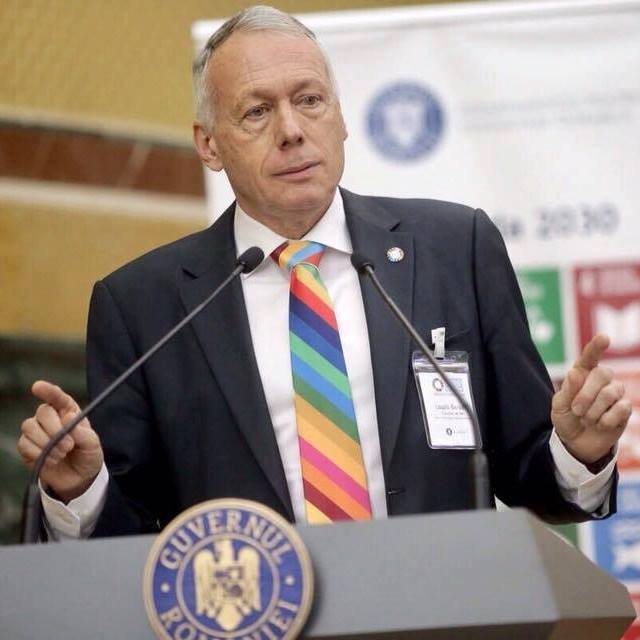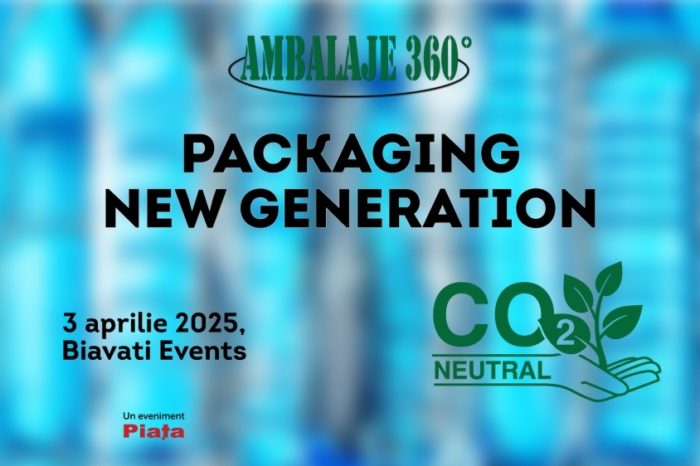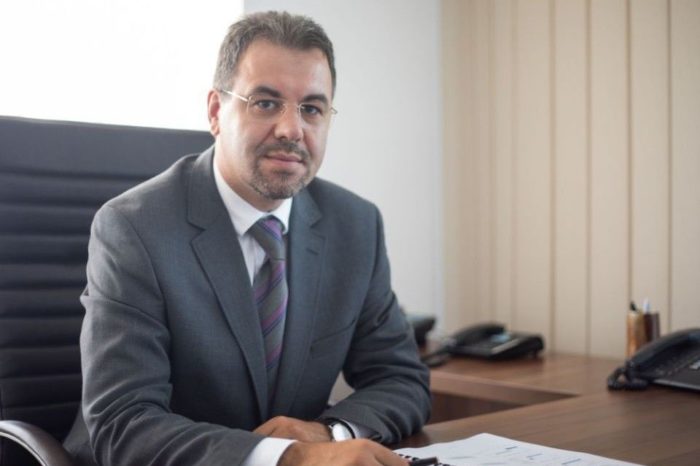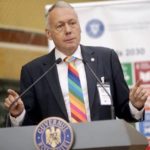State Counsellor László Borbély: “The National Strategy for the Circular Economy is in the process of completion”

“Through Romania’s National Strategy for Sustainable Development 2030, resulting from an extensive consultation process, we propose that the recycling rate reach 55% in 2025 and 60% by 2030,” László Borbély, State Counsellor, Department of Sustainable Development, Government of Romania, told The Diplomat-Bucharest.
At the moment, I can tell you that the National Strategy for the Circular Economy 2030 is in the process of completion. The document is the result of an intense research and consultation effort. To this endeavour, funded by the European Commission, contributed the Institute for Research in Circular Economy and Environment “Ernest Lupan” (IRCEM), in partnership with the Ministry of Environment, Waters and Forests and the Department for Sustainable Development of the Romanian Government, but also other ministries and institutions.
How can Romania accelerate the transition to a circular economy?
First of all, thank you for the opportunity to address your readers. Certainly, the circular economy must become a way of life for each of us and for that we must first understand the basic principles of this concept. Basically, the circular economy is a responsible and conscious model of production and consumption, which involves the reuse and recycling of existing materials and products in order to prolong their life as long as possible. Circularity is important because it gives us solutions to major problems: reducing the pressure on natural resources to achieve climate neutrality by 2050 and to stop the loss of biodiversity. Statistics show that about half of total greenhouse gas emissions and over 90% of biodiversity loss are caused by resource extraction and processing.
The transition to a circular economy can be accelerated by engaging the efforts of everyone, from public authorities to the private sector, civil society, producers and last but not least citizens. From how, what, and how much we buy, to the amount of water we use, the clothes we choose, to the way our homes are built, they are all aspects and choices that, if we make them consciously, we can have an accelerated transition to a circular society.
I note with enthusiasm that the interest in this way of life is higher and higher, first of all in the light of the debates in the public space in which I constantly participate on this subject.
Secondly, the Department for Sustainable Development, a structure subordinated to the Prime Minister, which I have been coordinating since 2017, is a persevering supporter of the circular economy, constantly carrying out public information actions in this segment. Romania’s National Strategy for Sustainable Development proposes, through the Development Objective ODD 12 Ensuring sustainable consumption and production models, the phased transition to this development model by introducing elements of the circular economy, increasing resource productivity, reducing food and waste through:
• reducing the generation of consumption at all its levels.
• recycling and reuse.
• encouraging companies to adopt sustainable practices and to integrate information on the sustainability of their activities into the reporting cycle.
• promoting sustainable public procurement practices.
• raising citizens’ awareness of what a lifestyle in harmony with nature means.
The circular economy will have net positive benefits in the form of GDP growth and job creation. With concrete steps, we need to change the way we produce and the way we consume. The circular economy is more than an efficient management of waste and resources, it is an opportunity for medium- and long-term development that we must follow, in the spirit of the #2030 Agenda.
When do you estimate that the National Strategy for the Circular Economy will be completed?
At the moment, I can tell you that the National Strategy for the Circular Economy 2030 is in the process of completion. The document is the result of an intense research and consultation effort. To this endeavour, funded by the European Commission, contributed the Institute for Research in Circular Economy and Environment “Ernest Lupan” (IRCEM), in partnership with the Ministry of Environment, Waters and Forests and the Department for Sustainable Development of the Romanian Government, but also other ministries and institutions.
What concrete objectives should be introduced in this strategy?
We all aim for ambitious goals, but it is important that the goals we include in the strategy are firmly anchored in reality. In this sense, the extensive consultation that preceded the implementation of the National Circular Economy Strategy had an essential role. The objectives set out in this document must clearly be to promote the principles of the circular economy and to increase the number of entities applying them. Moreover, we need to strengthen a coherent system that stimulates the integration into everyday life of concepts such as “Reduction, Reuse, Repair”. We will only be able to make the transition to a circular economy when all social actors understand the benefits of this model and implement it. Last but not least, the objectives of the Strategy must be in line with the European Union’s vision in this area.
What are the ways in which central and local authorities can promote and support responsible consumption of resources?
Public authorities must promote the principles of the circular economy primarily in the policies they develop. If we look at the European level, in March 2020, the European Commission adopted a new Action Plan for the circular economy. This is one of the main building blocks of the European Green Pact, Europe’s new agenda for sustainable growth. The new Action Plan provides for measures throughout the product life cycle and aims to prepare our economy for a green future, strengthen competitiveness, while protecting the environment and giving new rights to consumers.
The document capitalizes on the results of the work carried out since 2015 and focuses on designing and creating a circular economy in order to ensure that the resources used are maintained in the European Union economy for as long as possible. The National Strategy for the Circular Economy 2030 includes the elements of the new European Action Plan for the circular economy.
Secondly, an important component of the transition to this way of life is communication. The more we communicate, inform ourselves and pass on messages to citizens, the better we can apply circularity in our daily lives.
At the level of the Department for Sustainable Development, we are determined to demonstrate that the Romanian economy can adapt to European standards and has all the assets to become circular.
When will we see the “Pay-as-you-throw” concept implemented nationwide?
Such a measure could be effective as it provides a stimulus to the population. At the same time, it can generate aversion if the principles of sustainable development are not mastered by the majority of the population. Moreover, the mechanism involves one or more political decisions, both at central and local level. That’s why I can’t tell you exactly when it’s going to be implemented. What I can tell you for sure is that the Department for Sustainable Development will always be a partner of all social actors and will stimulate partnerships, so that we have the best decisions for Romania, with real impact in the medium and long term.
What objectives should Romania have regarding the increase of the reuse and recycling rate of municipal waste?
Through Romania’s National Strategy for Sustainable Development 2030, resulting from an extensive consultation process, we propose that the recycling rate reach 55% in 2025 and 60% by 2030. On the other hand, Romania generates the least municipal waste in the European Union, according to Eurostat data. However, these figures may also be due to certain reporting deficiencies. Therefore, we need to have very well-defined waste monitoring tools. Within the Sustainable Romania project (SIPOCA 613), we are working together with the National Institute of Statistics to finalize the national set of sustainable development indicators. We also try to streamline communication between public institutions in order to have a smooth data collection process. Through all these activities and not only, we want to build an Action Plan with exact targets and to support the taking of firm measures to ensure their implementation.













